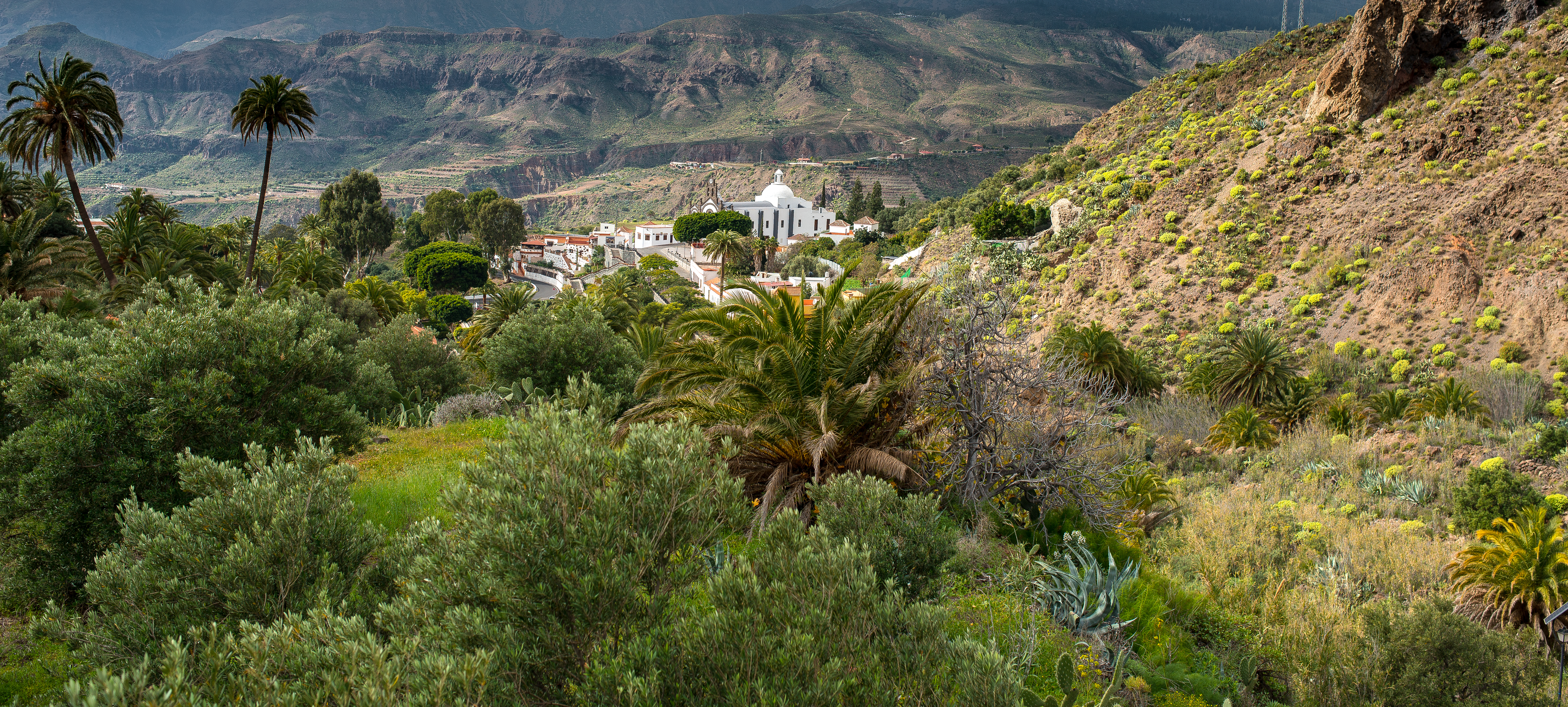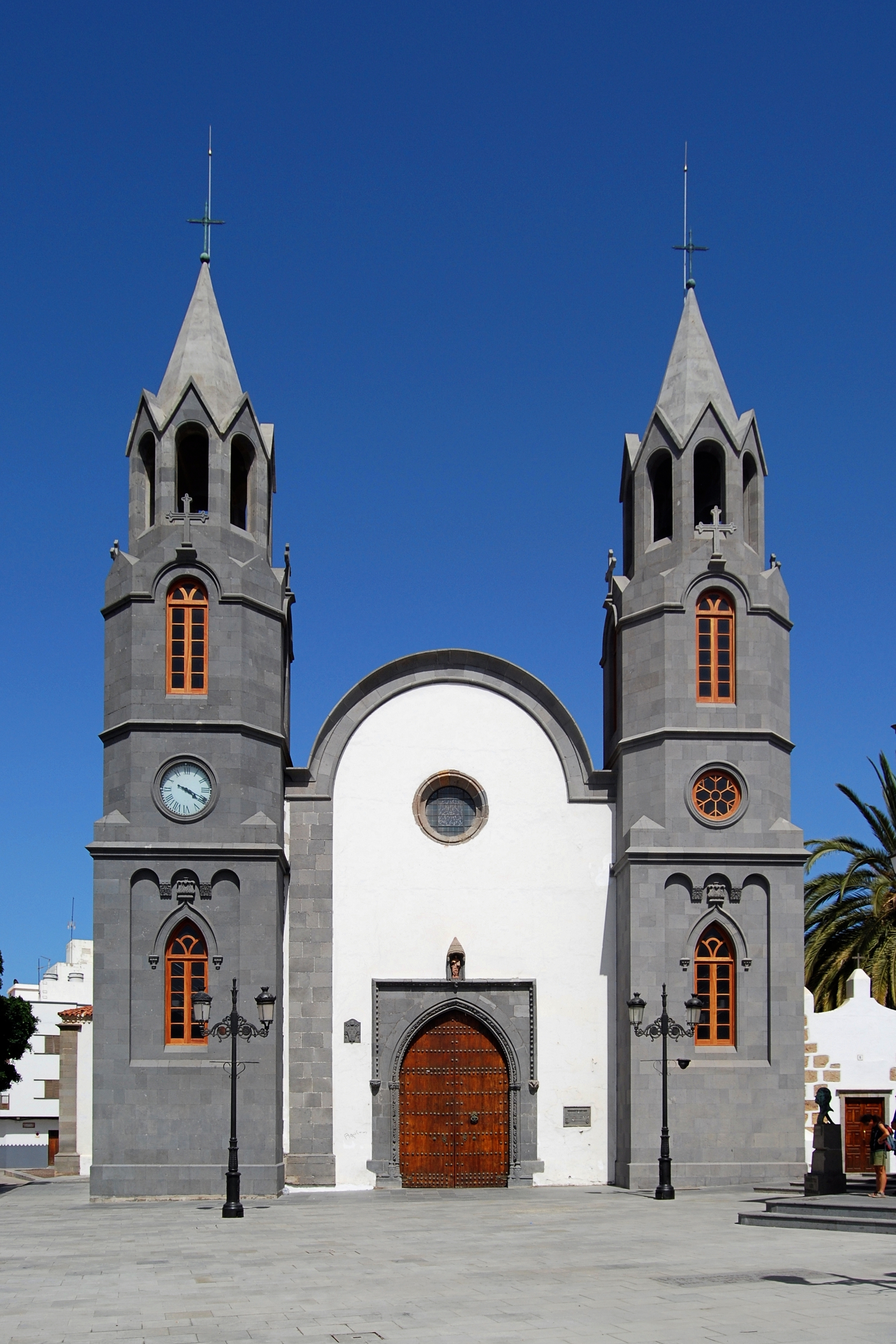|
Autopista GC-1
The GC-1 (also ''Autopista del Sur'', "Southern Highway") is a superhighway (or motorway) on the island of Gran Canaria. It links the capital Las Palmas in the north with Puerto de Mogán in the south. It is the fastest route from the north of the island to the south and vice versa with a top speed limit of 120 km/h (75 mph). It is approximately 75 km (47 miles) in length, and runs along the eastern and the southern coasts of this circular island and is also the second longest superhighway in the Canary Islands. The road provides easy access from the airport to the major cities and resorts. The resorts include Maspalomas and Playa del Inglés. The increase in tourism over the years has seen the GC1 route slowly being upgraded and widened to cope with extra traffic. GC-1 does not have motorway designation from Las Palmas to the airport, but has motorway designation from the airport to its southern end. Although the geographical name for the official name of the ... [...More Info...] [...Related Items...] OR: [Wikipedia] [Google] [Baidu] |
Las Palmas De Gran Canaria
Las Palmas (, ; ), officially Las Palmas de Gran Canaria, is a Spanish city and capital of Gran Canaria, in the Canary Islands, in the Atlantic Ocean. It is the capital city of the Canary Islands (jointly with Santa Cruz de Tenerife) and the most populous city in the autonomous community of the Canary Islands, and the ninth-largest city in Spain with a population of 381,223 in 2020. It is also the fifth-most populous urban area in Spain and (depending on sources) ninth or tenth most populous metropolitan area in Spain. Las Palmas is located in the northeastern part of the island of Gran Canaria, about west of the Moroccan coast in the Atlantic Ocean. Las Palmas experiences a desert climate,ThWorld map of Koppen-Geiger climate classification offset by the local cooler Canary Current, with warm temperatures throughout the year. It has an average annual temperature of . The city was founded in 1478, and considered the '' de facto'' (without legal and real recognition)''La Jun ... [...More Info...] [...Related Items...] OR: [Wikipedia] [Google] [Baidu] |
Arguineguín
Arguineguín (Guanche for "quiet water") is one of the most populated towns along the south coast of Gran Canaria, Spain. A once typical Canarian fishing village, it is now home to both locals and tourists, as the settlement has continued to grow. In 2015 it had 2517 inhabitants. It is part of the municipality of Mogán and is located southwest of Las Palmas. There are several bars and restaurants, the latter specialising in fresh fish caught the same day. Tuesday is market day (the largest on the island). Arguineguín features a beach and a port. Tourism is not as popular in Arguineguín as in the larger places as Maspalomas and Playa del Ingles. Holiday hotels, however, can be found in Arguineguín; Marino I, Dorado Beach, Club Puerto Atlantico, Sunwing Resort Arguineguín, Green Beach Hotel and Radisson Blu Resort to mention the larger ones. Transportation The harbour here hosts a ferry service to Puerto Rico de Gran Canaria and Puerto de Mogán whilst another popular ... [...More Info...] [...Related Items...] OR: [Wikipedia] [Google] [Baidu] |
Autovía GC-3
The GC-3, known officially as Circunvalación de Las Palmas de Gran Canaria (''Las Palmas de Gran Canaria Bypass'') is a superhighway in Gran Canaria (Canary Islands). It connects the two trunk roads GC-1 (Autopista del Sur de Gran Canaria) and GC-2 (Autovía del Norte de Gran Canaria) over a length of . A good half of the north-south traffic on the island is now handled by the GC-3, which significantly relieves the Avenida Marítima and the Túnel del Ingeniero Julio Luengo. Description More than half of the long route leads over bridges or through tunnels. As a result, the total cost of the motorway was 228 million euros, most of which was raised by the European "FEDER" fund. Construction began in 1997 and can be divided into five phases: * The 1st phase includes the section Tamaraceite – Siete Palmas. Construction began in 1996 and the road section was inaugurated in 1999. * The 2nd phase (Nueva Paterna – Pico Viento), which comprises the section that runs from Siete Pa ... [...More Info...] [...Related Items...] OR: [Wikipedia] [Google] [Baidu] |
Autopista GC-2
An autopista is a controlled-access highway in various Spanish-speaking countries *List of highways in Argentina includes autopistas of Argentina *List of autopistas and autovías in Spain *List of Mexican autopistas *Autopistas of Puerto Rico *List of Chilean freeways *Autopistas of Cuba The road network of Cuba consists of of roads, of which over are pavement (material), paved and are unpaved. The Caribbean country counts also of motorways (''autopistas''). Motorways Overview Cuba has eight toll-free expressways named '' ... {{Disambiguation Types of roads ... [...More Info...] [...Related Items...] OR: [Wikipedia] [Google] [Baidu] |
San Bartolomé De Tirajana
San Bartolomé de Tirajana is a village and a Spanish municipality in the south-eastern part of the island of Gran Canaria in the Las Palmas province in the Canary Islands. With an area of , San Bartolomé de Tirajana is the largest municipality in area on the island as well as the Canary Islands. The population is (2013).Instituto Canario de Estadística , population The municipality contains the large beach resorts of , including and [...More Info...] [...Related Items...] OR: [Wikipedia] [Google] [Baidu] |
Santa Lucía De Tirajana
Santa Lucía de Tirajana is a town and a Municipalities of Spain, Spanish municipality in the south-eastern part of the island of Gran Canaria, in the Province of Las Palmas, in the Canary Islands. Geography The town of Santa Lucía de Tirajana is situated in the mountains, south-west of Las Palmas. Its population is (2013),Instituto Canario de Estadística , population and the area is . The municipality includes the larger towns Cruce de Sardina, El Doctoral and Vecindario, located near the coast. The Autopista GC-1, GC-1 passes through the south-eastern part of the municipality. [...More Info...] [...Related Items...] OR: [Wikipedia] [Google] [Baidu] |
Ingenio, Las Palmas
Ingenio is a town and a Municipalities of Spain, Spanish municipality in the eastern part of the island of Gran Canaria in the Province of Las Palmas in the Canary Islands. Its population is (2013),Instituto Canario de Estadística , population and the area is . Ingenio is situated between the mountains and the Atlantic Ocean, south of the island's capital Las Palmas and south of Telde. The municipality includes the town Carrizal. The Autopista GC-1, GC-1 motorway passes east of the town, and the Gran Canaria Airport is situated in the eastern part of the municipality. In agriculture, sugar cane is one of the dominant crops in Ingenio. The municipality is home to the International Folklore Festival which has the participation of music groups ... [...More Info...] [...Related Items...] OR: [Wikipedia] [Google] [Baidu] |
Telde, Las Palmas
Telde is a Municipalities of Spain, municipality in the eastern part of the island of Gran Canaria, Canary Islands, overseas (Atlantic) insular Spain. It borders Las Palmas to the north and is part of its urban area. It is the second most populous municipality on the island, with a population of (2013).Instituto Canario de Estadística , population Its area is . The city is the oldest and the first capital of the island of Gran Canaria, founded before 1351, a former medieval bishopric and present Catholic titular see. The Autopista GC-1, GC-1 motorway passes east of the city. Gran Canaria International Airport is located in the subdivision of Gando, south of Telde. History Before the Spanish invasion Telde was the eastern ...[...More Info...] [...Related Items...] OR: [Wikipedia] [Google] [Baidu] |
Puerto Rico De Gran Canaria
Puerto Rico de Gran Canaria is a holiday resort situated on the south-west coast of the Spanish island of Gran Canaria. Temperatures in the winter remain around 20-25 °C while there is an average of less than three days per month of precipitation. The volcanic origin of Gran Canaria provides for the island's coastal ruggedness and contrasting verdant interior. Many of the rocky ravines that lead down to the coastline on the southern side of the island have been developed with holiday installations similar to that of Puerto Rico de Gran Canaria. Apartment complexes and hotels crowd the sides of the otherwise barren cliffs leading down to long, natural beaches. Puerto Rico has a sandy beach A beach is a landform alongside a body of water which consists of loose particles. The particles composing a beach are typically made from Rock (geology), rock, such as sand, gravel, shingle beach, shingle, pebbles, etc., or biological s ... and two small harbours. Inside Pu ... [...More Info...] [...Related Items...] OR: [Wikipedia] [Google] [Baidu] |

